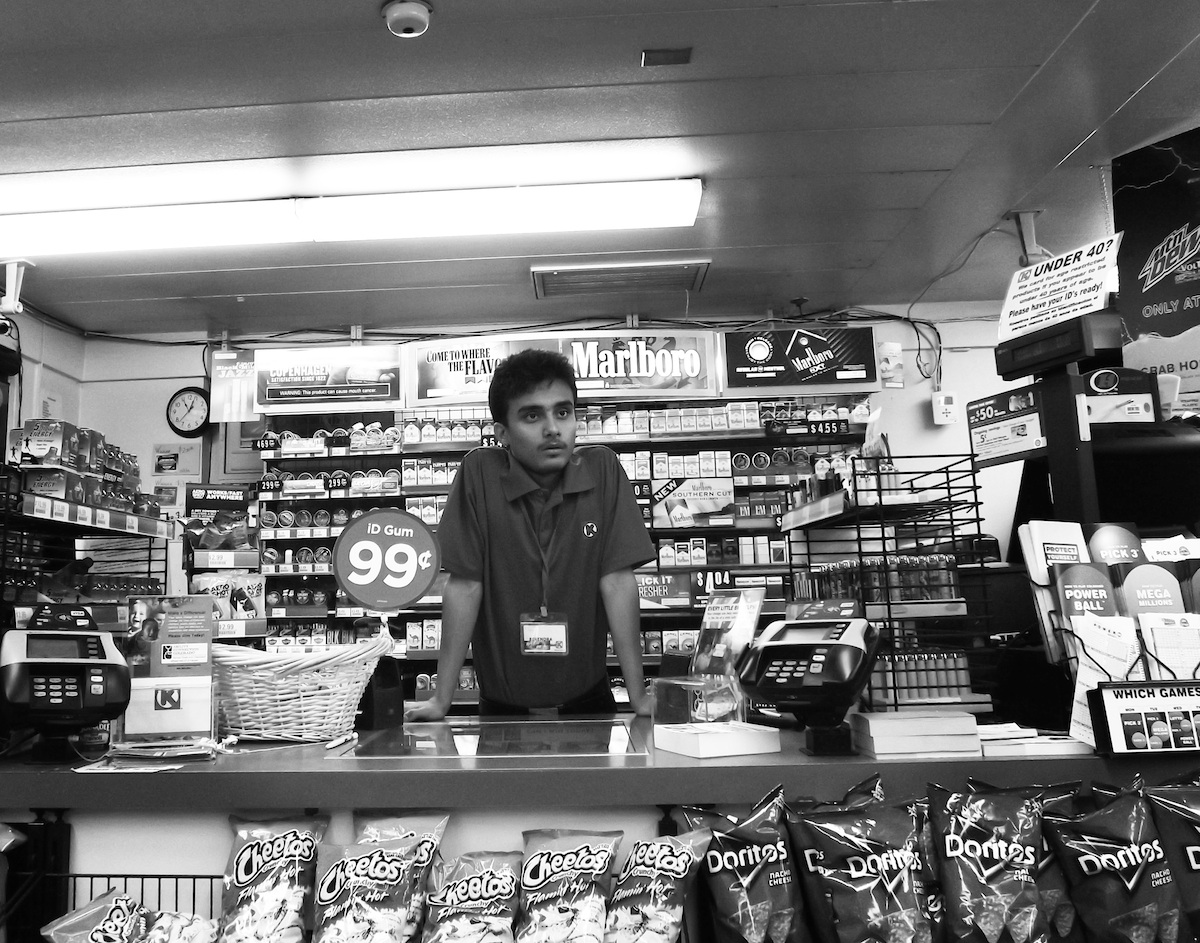The Local newsletter is your free, daily guide to life in Colorado. For locals, by locals.
Birendra Dhakal, a 19-year-old refugee from Nepal, set up a camera and snapped this picture of himself working at an Aurora gas station for Picture.Me.Here., a photography program that teaches refugee students about photography and encourages them to use it to explore their new lives here in Colorado. Even though it was his first time participating in the program, Dhakal’s English and photography skills were so advanced that the teachers asked him to be their assistant almost right away. “This picture is black and white, because nobody would want to work a graveyard shift at a gas station,” Dhakal says.
Dhakal is one of 12 refugees from around the world who will have their photos displayed at the Colorado Photographic Arts Center this month. Dhakal and his fellow refugees (from Burma, Bhutan, Tibet, and Nepal), were all students in Picture.Me.Here.’s summer program. We talked to Dhakal and Tashi Chontso, a Tibetan refugee, about their experiences with Picture.Me.Here. (Bonus: You can check out more photos from the CPAC exhibit here.)

5280: What appealed to you about the Picture.Me.Here. program?
Birendra Dhakal: As I teach what I know, I am learning even more. I will be excited to do it all over again. You know, when there is a group of people from different countries, you can see the culture. You know, it could be through photography. It could be through watching them do something. It could be the way they dress. And it could be in Picture.Me.Here.
Tashi Chontso: Before joining this class, I didn’t talk to people, and I was shy. After I started this class, I had to talk in front of class, which brings me a little bit of confidence. I have gained confidence.
5280: Why did you choose these photos to display?
BD: I chose that picture at the gas station because, you know, right now I’m going to college, and I’m working part-time at that gas station. And I had to work the graveyard shift. And just before, I was at Picture.Me.Here., and I said, “It sucks to work at night, and it’s kind of dangerous.” And someone in class told me to take pictures of myself while I was working. He said, “You can look back at those and realize how far you’ve come.” And that night, with my camera, I was in there, and I felt like trying to document what I was doing. I felt like I had a friend with me.
TC: I took a photo of my workplace. From there, I can make a story. It’s just my story—how I begin, how my life started. Back in Nepal [Chontso is Tibetan but lived in a Nepali refugee camp before coming to Denver] I didn’t usually work. It was just me at school and at home. After coming here and starting this job at a laundry company, it’s been hard. But I just keep on going. It’s my first job in America. It’s my new life story.
5280: What do you like about photography and using it for storytelling?
BD: I feel like it will make me capture the moment, and I can keep that moment. A camera is like my eye. My eyes can capture, and I can keep the memories with my mind. With a camera, I can do it and actually look at it. It’s something that my mind has made real.
I have been here for six years. I came here when I was 13 through a resettlement program from the International Organization for Migration. I like to share my culture, where I come from. Taking pictures, I can show them to people, and I can show exactly what I am talking about. I can describe a picture to someone the way I want to because I took those pictures, and I know exactly what I’m trying to say. I have evidence. You know, when someone doesn’t get it, and you can show them. You can be like, “It’s right here. This is what I’m talking about.”
TC: It shows what’s out there. It’s a photo that shows the fact. It helps me tell my story and show what I am doing in this country. Yeah, but it’s not only about me. It’s the life story of a refugee. It’s like the beginning of refugees lives in Denver—how we struggle, you know.
—Image courtesy of Picture.Me.Here.









